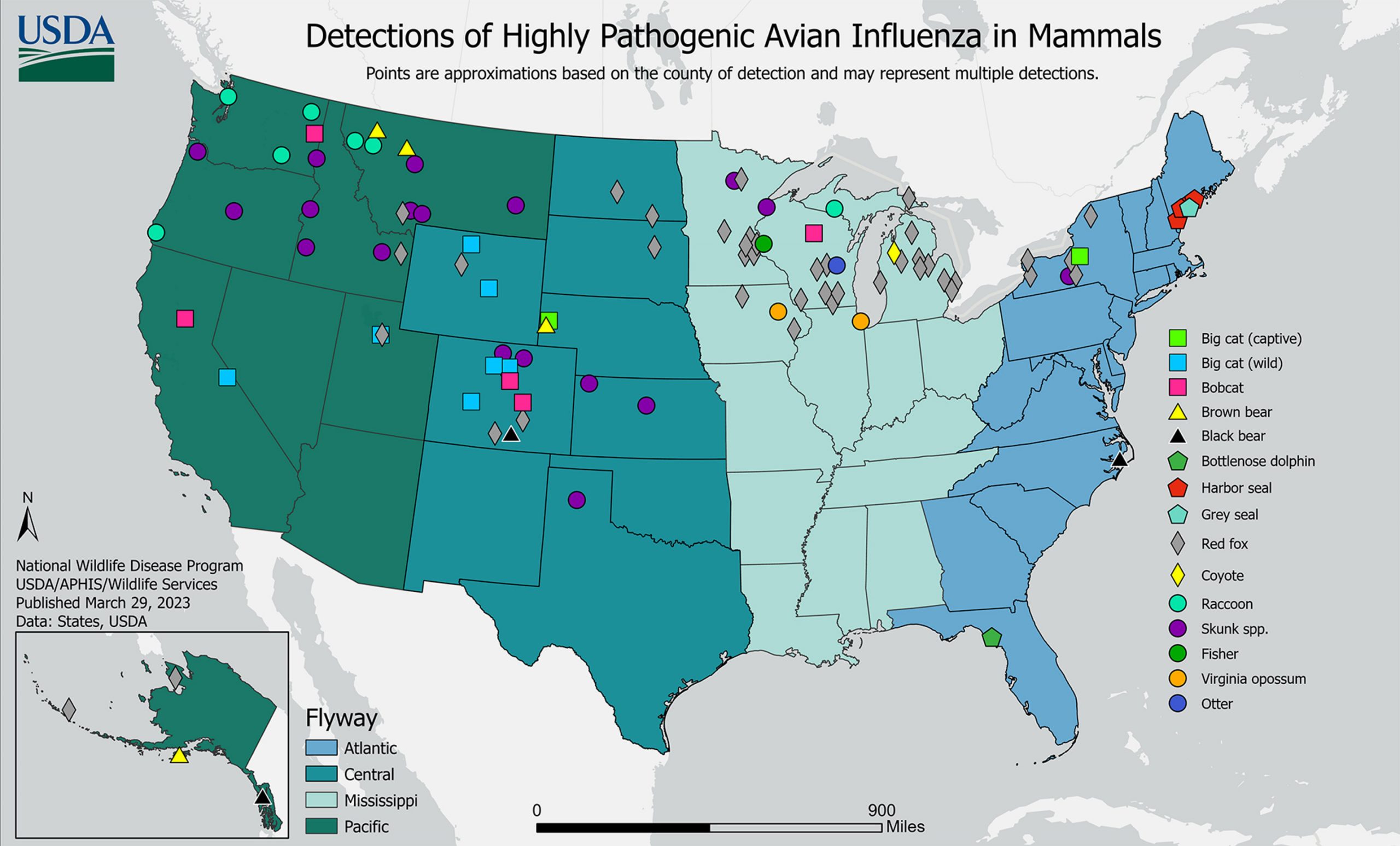BY: SAMANTHA BARTLETT, DVM
Highly Pathogenic Avian Influenza (HPAI) is responsible for the death of approximately 60 million chickens and turkeys across the United States. Infections have been identified in wild, commercial and backyard birds in every state except Hawaii. The U.S. Department of Agriculture (USDA) has been tracking not only avian infections, but also cases that have spilled over into mammals across the nation. The USDA published a report of mammalian cases that had been tracked from 2022 until March 2023.
There are four types of influenza – A, B, C, and D. All four types can infect animals, although Type D is only known to affect humans. Type A viruses include HPAI as well as swine flu subtypes. The avian subtype currently affecting birds is H5N1. Although no known human-to-human transmission of H5N1 has occurred, a few cases have been reported in humans after exposure to infected poultry. However, according to the USDA report published in March 2023, H5N1 has been detected in numerous mammalian species, including most noticeably in bobcat, black and brown bears, bottlenose dolphin, harbor and grey seals, mountain lion, red fox, raccoon, and striped skunk.
Researchers believe that most animals contracted the virus by eating infected host birds. It is unknown once infected if these mammals can spread the virus to offspring or other mammals in contact. According to Dr. Rebecca Poulson, assistant researcher with the Southeastern Cooperative Wildlife Disease Study at the University of Georgia College of Veterinary Medicine, individuals within a species differ in their susceptibility to HPAI. Seals seem to have a lot of morbidity and mortality within affected populations on the North Atlantic coast and sea lions in Peru seem to have been susceptible to spread of HPAI among close populations.
Studies and surveillance are ongoing as researchers try to determine the significance and danger of HPAI to other species as well as to develop management practices to control and contain outbreaks among mammalian species.
A map showing species and locations of mammals reported with HPAI can be found at https://www.avma.org/sites/default/files/2023-04/AVMANews230424-HPN1-mammals-2880w.jpg.







